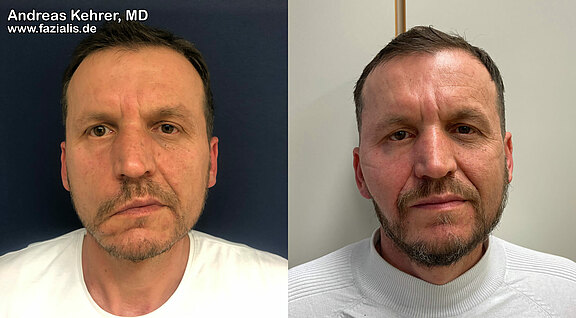The focus of the restoration is above all on the eye area and the mouth area. The aim of the restoration is to bring the paralyzed, flaccid half of the face back into line with the healthy half. In addition to aesthetic shape correction and symmetry adjustment, this includes significant functional improvements for the patients. Among other things, tightening operations, eyelid corrections, implantations of gold/platinum weights to weight the upper eyelid, muscular restoration of the eye closure, introduction of autologous tissue to improve nasal breathing, nerve repositioning, free tissue transplantation, and static suspension procedures (tissue regeneration of hanging facial parts with autologous tissue) are offered. The operations are performed under the greatest possible protection of the tissue under magnifying glasses with high magnification and/or a high-performance microscope. All surgical scars can be placed inconspicuously and are sutured under the high aesthetic standards of plastic surgery and usually heal so well that they remain inconspicuous. For facial reconstruction, for example, a very similar incision is usually used as performed with aesthetic facelifts. The sutures are made of the finest, self-dissolving sutures. Thanks to gentle, modern surgical procedures, the patient only has to expect moderate postoperative wound pain, which can be controlled very well with oral analgesics (painkillers).
Before and after surgical recreation of the nasolabial fold, higher positioning of the corner of the mouth and free muscle transplantation as a combination procedure of static and dynamic restoration in a 45-year-old patient. It becomes clear how much symmetry is already conveyed at rest (without facial expression) by the uniform configuration of the natural smile line.
